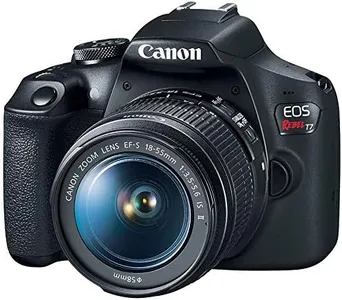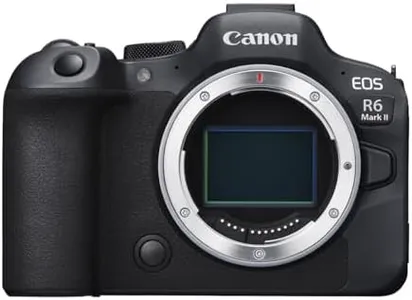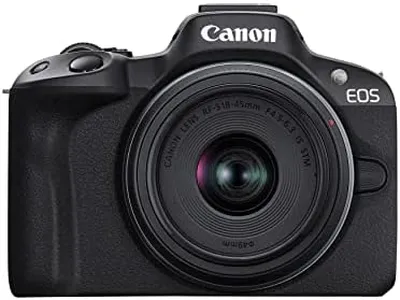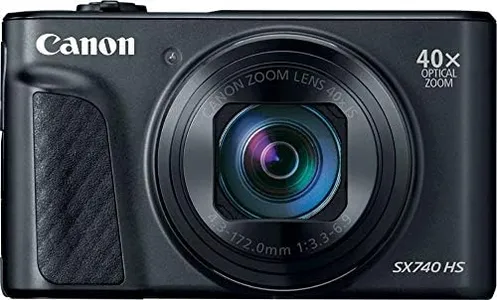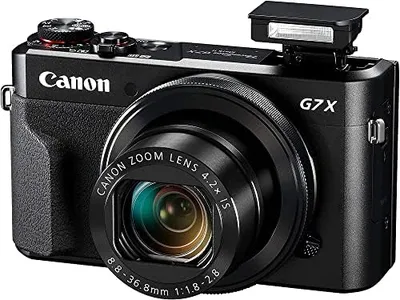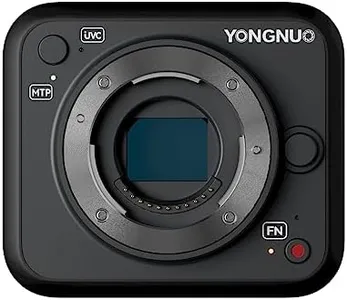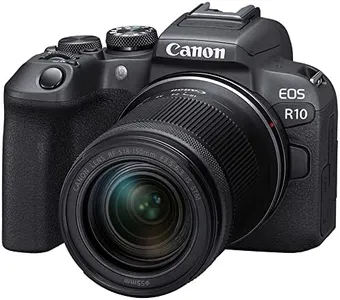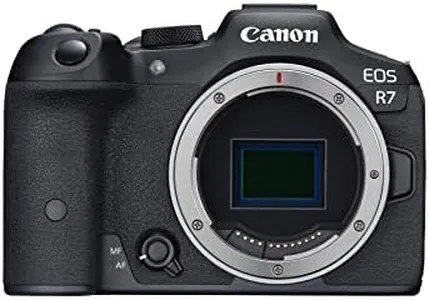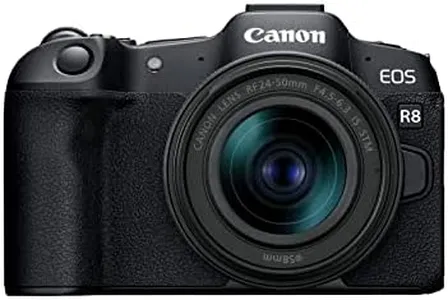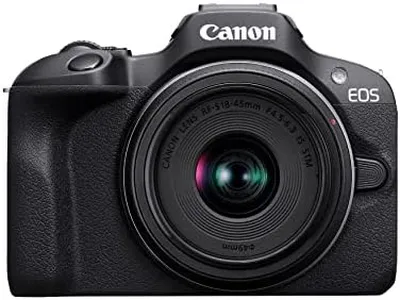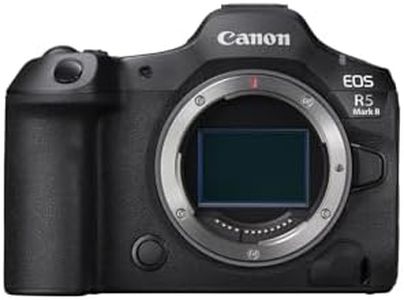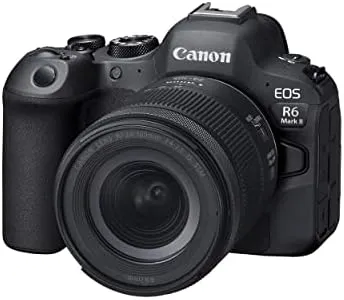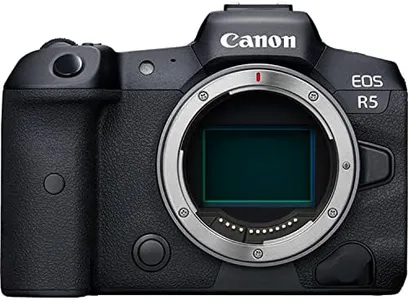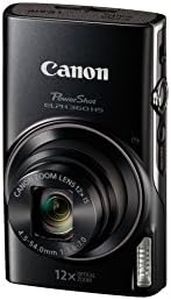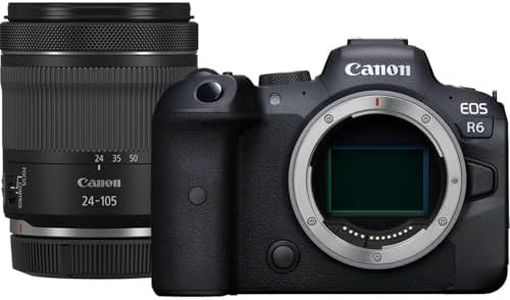10 Best Canon Cameras 2025 in the United States
Our technology thoroughly searches through the online shopping world, reviewing hundreds of sites. We then process and analyze this information, updating in real-time to bring you the latest top-rated products. This way, you always get the best and most current options available.

Our Top Picks
Winner
Canon EOS Rebel T7 DSLR Camera with 18-55mm Lens | Built-in Wi-Fi | 24.1 MP CMOS Sensor | DIGIC 4+ Image Processor and Full HD Videos
Most important from
7840 reviews
The Canon EOS Rebel T7 is a solid entry-level DSLR camera, perfect for beginners in photography. It features a 24.1 MP CMOS sensor, which ensures high-quality images, and the DIGIC 4+ Image Processor, which helps in processing these images efficiently. Its ISO range of 100-6400 (expandable to 12800) allows for decent low-light performance, although it might not be the best for extremely low-light conditions.
The built-in Wi-Fi and NFC make it easy to connect and share photos, which is a big plus for those who love sharing their work on social media quickly. Additionally, the 9-point autofocus system and AI Servo AF provide reasonably good focusing capabilities for most casual photography needs. However, the autofocus might struggle with more complex or fast-moving subjects due to its limited points. The optical viewfinder offers 95% coverage, which is quite standard in this range but means you might miss out on the edges of your composition.
The build quality is decent, and the camera is lightweight at 1.04 pounds, making it easy to handle and carry around. The lens compatibility with Canon EF and EF-S lenses gives users a wide range of options to choose from, though EF-M lenses are not supported. Battery life is another strong point, allowing for approximately 500 photos per charge. On the downside, the continuous shooting speed is only 3 frames per second, which might not be sufficient for sports or action photography. Video capabilities include Full HD recording at up to 30 fps, which is good but not top-tier compared to more advanced models offering 4K videos. Lastly, the camera has basic connectivity options, including USB, HDMI, and wireless technologies. The Canon EOS Rebel T7 is a reliable and user-friendly camera ideal for beginners and casual photographers seeking good image quality without a steep learning curve.
Most important from
7840 reviews
Canon EOS R6 Mark II Mirrorless Camera (Body Only), Full-Frame Camera, 24.2 Megapixel CMOS Sensor, Photo and Video Capabilities, Black
Most important from
595 reviews
The Canon EOS R6 Mark II is a robust full-frame mirrorless camera designed for serious photographers and videographers, featuring a 24.2 megapixel CMOS sensor that excels in low-light conditions. One of its standout strengths is the DIGIC X image processor, which enhances image quality and video capabilities, providing sharp images with minimal noise. With high-speed continuous shooting at up to 40 frames per second, it captures fast action scenes with ease, making it a great choice for sports and wildlife photography. The advanced autofocus system, including head, face, and eye detection, ensures quick and accurate focusing on subjects, whether it’s a person or an animal.
In terms of video capabilities, the R6 Mark II allows for impressive 6K oversampled uncropped 4K recording at 60 fps, and users can shoot Full-HD at high frame rates without overheating. This feature, combined with the efficient battery life for extended recording, makes it suitable for video projects. The build quality is also commendable, with a multi-angle touchscreen for easy composition from various angles and a precise electronic viewfinder that offers a clear view of your subject.
There are some considerations to keep in mind. This camera is best suited for those with a professional or advanced skill level, as its range of features might overwhelm beginners. Additionally, while the battery life is suitable, it may not last as long during continuous video shooting as some users might hope. The cost can also be a drawback, as mirrorless cameras, especially high-performance ones like this, tend to be on the pricier side. Lastly, it has limited compatibility with lenses, as it primarily works with Canon RF lenses, which may require additional investment.
The Canon EOS R6 Mark II offers exceptional image quality, advanced autofocus, and strong video capabilities, making it a great choice for professional photographers and videographers, but it may be too complex or costly for casual users.
Most important from
595 reviews
Canon EOS R50 Mirrorless Camera RF-S18-45mm F4.5-6.3 is STM Lens Kit, 24.2 Megapixel CMOS (APS-C) Sensor, 4K Video, Hybrid Camera, Photo and Video, Vlogging, Content Creator, RF Mount, Black
Most important from
1229 reviews
The Canon EOS R50 is a versatile mirrorless camera designed for both photography and videography, making it an excellent option for content creators, vloggers, and budding photographers. It features a 24.2 Megapixel CMOS (APS-C) sensor coupled with a DIGIC X processor, ensuring high-quality images with great detail. The camera excels in low-light conditions, thanks to its extended ISO range of up to 51200, and offers a variety of auto-compatible scenes to enhance your shooting experience in challenging lighting conditions.
Its advanced autofocus system, with 651 AF zones and deep learning technology for subject tracking, provides reliable performance for capturing fast-moving subjects, animals, and vehicles. This is particularly useful for those looking to shoot high-speed action or maintain sharp focus during video recording. The EOS R50 supports 4K video capture at 30 fps and Full-HD at 120 fps, adding to its versatility as a hybrid camera. It also includes features like a vari-angle touchscreen for easy composition and Bluetooth and Wi-Fi connectivity for seamless file transfer and remote control via the Canon Camera Connect app.
On the downside, the camera lacks built-in image stabilization, which means you might need to rely on lenses with stabilization or a tripod for steady shots. The battery life is decent but may require spares for extended shooting sessions. Additionally, the maximum aperture of the included RF-S18-45mm lens is relatively narrow (f/4.5-6.3), potentially limiting its performance in very low light without a higher ISO setting. Despite these minor drawbacks, the Canon EOS R50 is a strong contender in the mirrorless camera market, particularly for those in the creative and vlogging communities seeking a compact, feature-rich camera.
Most important from
1229 reviews
Buying Guide for the Best Canon Cameras
Choosing the right Canon camera can be a rewarding experience, but it requires some understanding of the key specifications that differentiate one model from another. By focusing on these specs, you can find a camera that best fits your needs, whether you're a beginner, enthusiast, or professional photographer. Consider what you plan to use the camera for, such as travel, sports, portraits, or video, and let that guide your decision-making process.FAQ
Most Popular Categories Right Now
